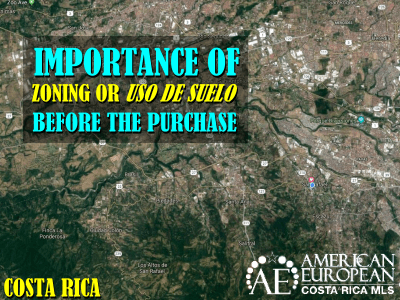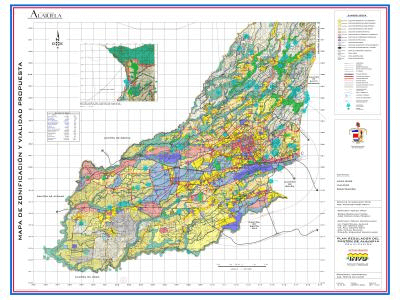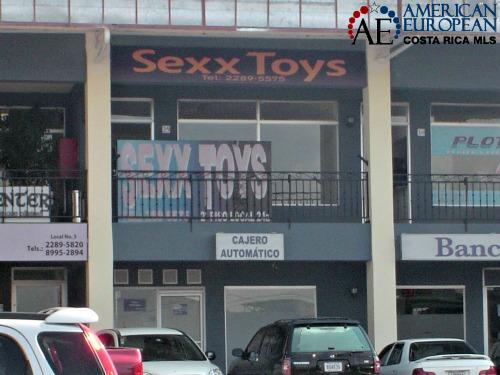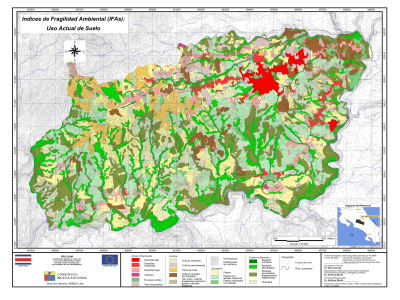Your first due diligence when buying land or a property in Costa Rica is to request the zoning or certificación de Uso de Suelo for that particular property. The certificación de Uso de Suelo is extended by the engineering department at the Municipality where the property is located.
Each city has its own zoning plan or plan regulador. Not every city in Costa Rica has an approved plan. Many cities (mostly outside the Greater Metropolitan Area – GAM) have no zoning plan, mostly due to political interests. You will find zoning in cities like Curridabat and Escazu.
Be aware, that even if there is no plan in the location where you’re buying, there might still be restrictions.
These restrictions can be river setbacks, setback from a spring, construction prohibitions or others. Also, if you’re going to be close to a beach, learn about maritime zoning.
Besides the Uso de Suelo, you should also request a water letter from the water company. This water letter is necessary to make sure the water company will feed water to the property.
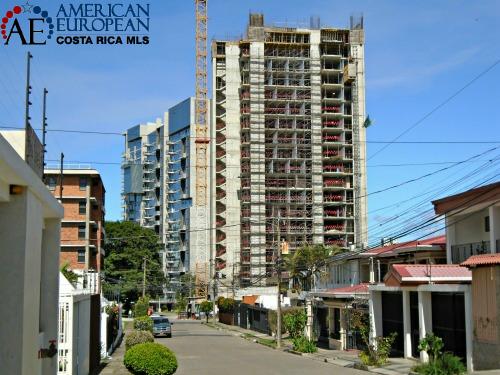
There are also some other reasons why you want to know the regulations of the area:
- Can they build a highrise next door?
- Is it possible someone will start a bar or restaurant next door?
- Are neighboring properties allowed to be used for a gas station or a chemical storage facility?
I’m sure you get what I’m trying to say here.
What is a zoning plan?
A zoning plan aims to maintain the residential vocation of a city while preserving and reinforcing the ecological areas.
Often, priority is given to promoting the quality of residential life in an integral way with the urban aspects, services, and amenities. In addition, the commercial areas on primary roads. Therefore, conflicting business should keep the possible inconveniences inside their property and not disturb the inhabitants of residential areas.
Zoning entails the regulation of land uses and buildings in three ways:
- What a parcel of land may be used for
- Regulating the form that a building can take: how high it can be, how big, how close to the property line, etc.
- What type of supporting infrastructure and amenities must be provided: how many parking spaces, driveways or sidewalks; the provision of adequate and efficient water and sewer lines; etc.
To identify problems
As a result, a Zoning Plan serves to identify the problems that the city might have, among them:
- Ensure homes are built in adequate places, by reducing the risk of floods and landslides.
- Locate health, education and transportation services in places accessible and according to the growing demand.
- Control the pollution of rivers, streams and underground water caused by the construction in inadequate areas.
- Identify and protect springs.
- Organize traffic and transport.
- Organize the future areas of urban expansion of the city centers.
- Create spaces for recreation: playgrounds, plazas, and parks.
- Eliminate the disorder in the growth and construction of urbanizations.
- Beautify the landscape of the city.
- Protect what is left of the architectural heritage.
- Properly plan the use of land throughout the city.
Residential or commercial?
Even if you plan to purchase in a residential area, it is important to find out what can happen next door. Your real estate agent or seller can tell you not to worry, but it is of imminent importance to request this document. The municipality answers your zoning request within two weeks of submitting the necessary form.
Often, buyers don’t find out long after the purchase of a property that the zoning doesn’t fit their plans. For that reason, it is important to learn more about the regulations before the purchase.
The options
Every city has the independence to create their own zoning plan. Therefore, each plan is different. Some zoning plans are difficult to understand for a layperson, so I suggest you hire an architect to study your options before you make important decisions.
A property can be zoned for:
- Commercial property
- Residential property
- Mixed use (Commercial as well as residential)
- Agriculture
Certificación de Uso de Suelo
A certified zoning by the municipality shows many details:
- The minimum size of the land (that you can subdivide)
- The minimum frontage of the land (depending on septic)
- Maximum height to build (how many stories)
- Maximum coverage of the property (percentage of allowed construction)
- The density of the population (the number of residents per hectare)
Residential zoning
In general, you find residential zoning specified more or less as follows:
Low-Density Residential – Zona Residencial Baja Densidad (ZRBD)
Medium Density Residential – Zona Residencial Media Densidad (ZRMD)
High-Density Residential – Zona Residencial Alta Densidad (ZRAD)
Special control áreas, protection áreas, highrise áreas etc.
Commercial zoning
Also, most cities specify commercial zoning as
Linear Commercial – Zona de Comercio Lineal (on main roads)
Punctual Commercial – Zona de Comercio Puntual (in smaller locations)
Zoning Details
Some zoning plans are much more detailed than others. More often than not, a zoning plan is illogical. But at some point, when the plan was created it seemed logical to the creators of the plan. Therefore, you as a consumer, are not in the position to discuss the logic of a regulatory plan. It is what it is, accept it.
More important is that you, the buyer, try to make sense of it BEFORE you make your purchase decision. Make sure to consult a professional like an architect or a civil engineer to check the zoning plan, if one is in place. An interesting website (although incomplete) is Trámites de Construccion.
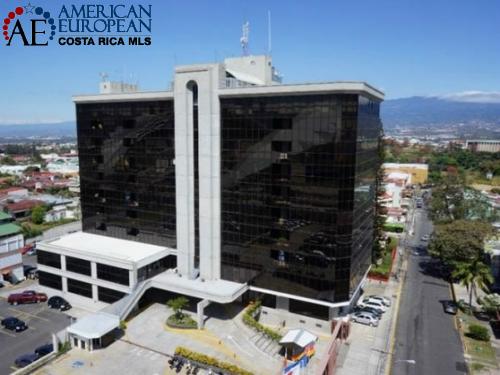
Request the zoning or Uso de Suelo
Now that you understand a bit more about zoning plans, you will understand the importance of requesting the Uso de Suelo before you purchase a property. Inform yourself well at the Municipality where the property of your interest is locating, before you request the certicifación de Uso de Suelo.
It is also important to note, that we appreciate your business, that’s why we published this blog. Ready to try with one of our members? Contact us now!


